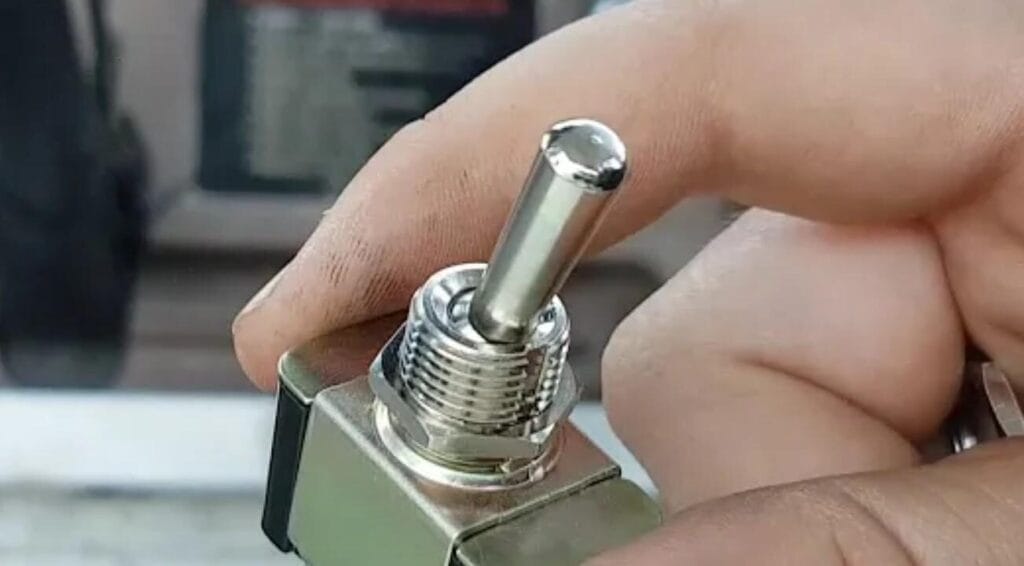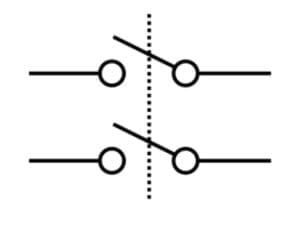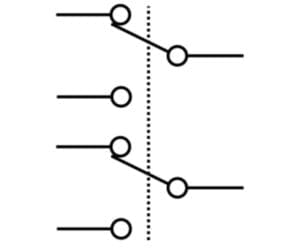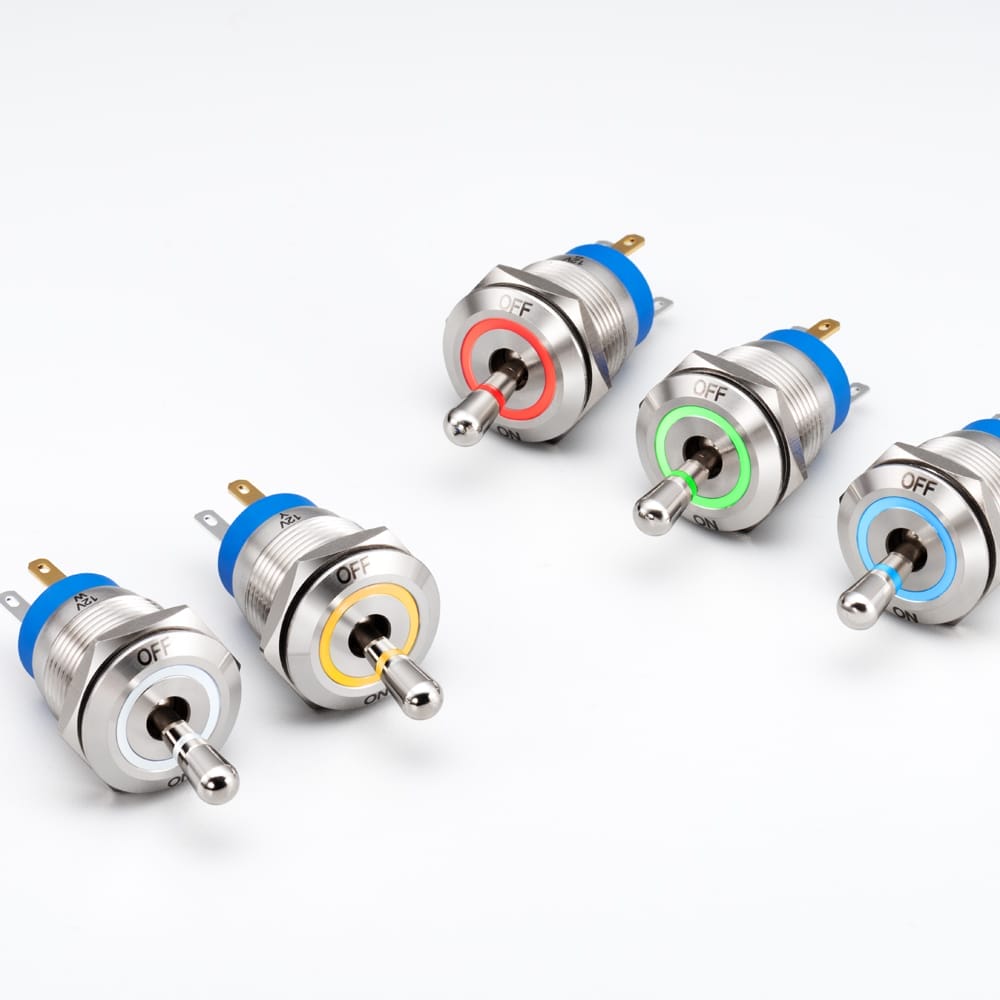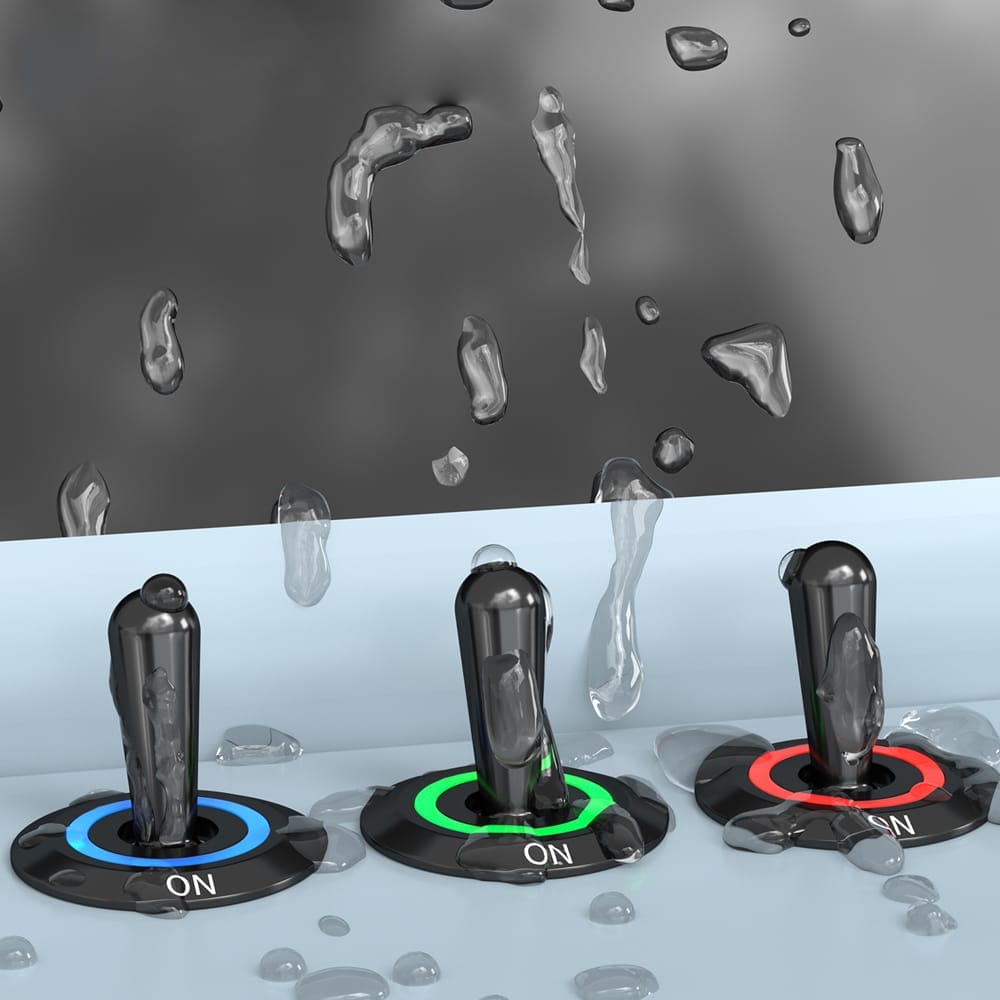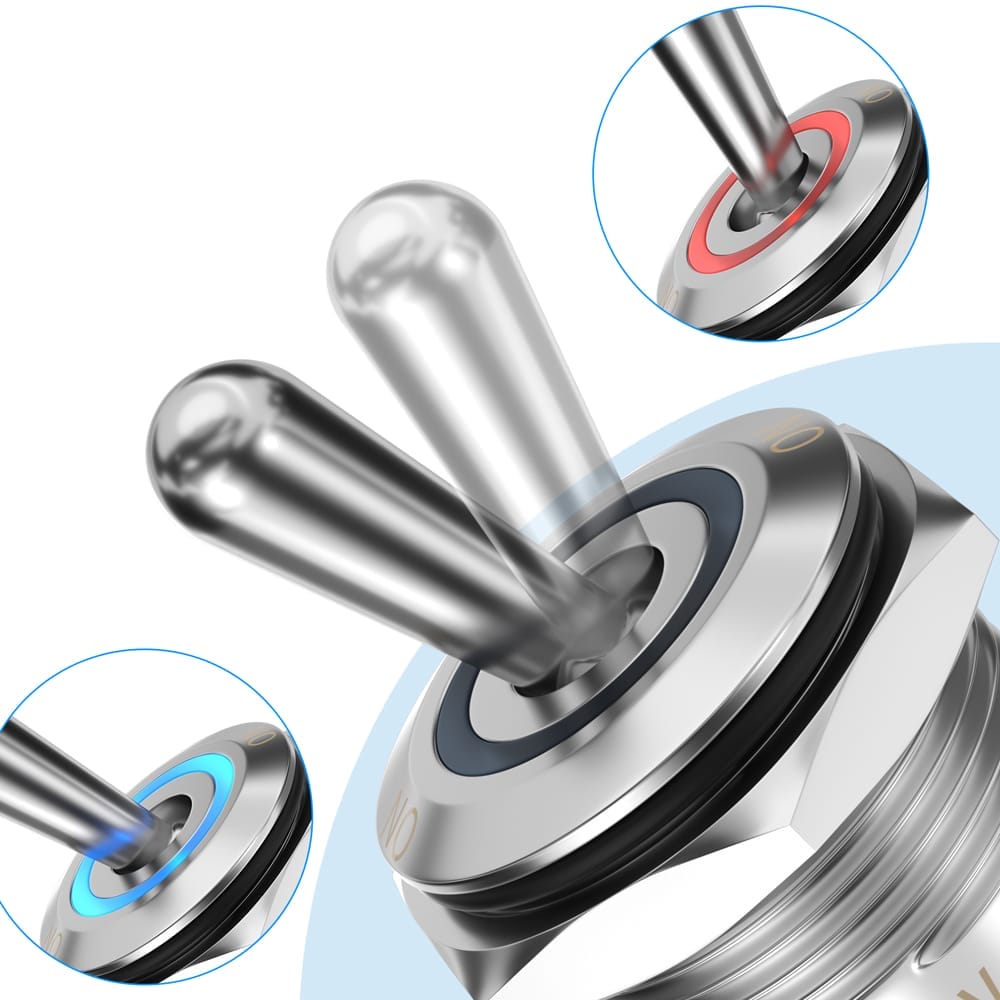
Switches help regulate the current flow in a circuit. The market offers a plethora of switch types, each performing distinct functions. Toggle switches stand out as a common and versatile type in many options. They provide a straightforward means of controlling circuits. Hence, it offers users a reliable and easy-to-operate solution for diverse tasks. Toggle switches find application in toggling lights on and off and controlling motors, pumps, and machinery. Yet, a common query is there: what is a toggle switch, and how does it work?
Continue reading to know more about toggle switches, their working, types, applications, and more!
How Does a Toggle Switch Work?
All done with what is a toggle switch? Let’s now look at the working of a toggle switch!
The working of a toggle switch is pretty simple! There’s a lever on the external side and two contacts inside the switch. The “off” position means the inside contacts are open, preventing the flow of electric current through the switch.
However, the lever is moved to the “on ” position, and the contacts close. This allows the current to pass through and complete the circuit. These switches find applications where a manual, physical action is needed to control the circuit.
Types of Toggle Switches
There are many types of toggle switches available. You’ll find options that are different in size and style. Let’s look at some!
Based on Functionality
Now that you know about what is a toggle switch, its types based on functionality are:
Light-emitting diode toggle switches feature LEDs in the switch design. The lever is illuminated, clearly indicating the switch’s status.
This LED feature adds a unique character to the switch functionality, enhancing visibility in low-light conditions. LED switches are suitable in applications where visual feedback on the switch state is essential, like automotive panels or control interfaces.
A toggle switch with a cover provides an added layer of protection to the switch mechanism. The cover is made of durable materials and shields the toggle from environmental factors. Hence it prevents dust, moisture, or accidental interference.
This enhances the reliability and longevity of the toggle switch. Toggle switches with covers are crucial for applications in outdoor environments, industrial settings, chassis, off-road lights, etc.
Based on Contact Configurations
Toggle switches also have types based on the number of poles and throws. Poles indicate how many separate circuits a switch can control simultaneously. The throw of a switch refers to the number of positions or states a switch can adopt.
Types of toggle switches as per connections are:
SPST toggle switches have two terminals. There’s one pole, meaning they control one circuit and a single throw, indicating a single on/off position.
A single pole controls one circuit in SPDT toggle switches. But there’s a double throw, thus allowing the switch to be in one of two positions. This switch is best in scenarios where a device needs to alternate between two separate circuits.
DPST toggle switches possess two poles. This allows them to control two independent circuits simultaneously. However, they only have a single throw – they can switch both circuits on or off simultaneously.
DPDT toggle switches are more versatile. They have two poles and two throws. The double pole allows them to control two circuits independently. On the other hand, double throw allows choosing between two different positions for each circuit.
Best Toggle Switches Options to Try!
In case you have learned enough about what is a toggle switch and want to explore the best joystick switches, we have some top-notch options.
The following is one of them:
19mm Anti Vandal Toggle Switch
The 19mm Anti-vandal Toggle Switch ensures simple and reliable operation. It offers a variety of LED options and features ring illumination for added convenience. This switch is IP67-rated, providing robust protection against environmental elements. You can opt for the optional soldered wire leads (500mm long) for enhanced flexibility in your setup.
Key Features
- Electrical Rating: 10A 250VAC: Handles diverse electrical loads effectively.
- Excellent Insulation Resistance: ≥100MΩ Max.: Reliable electrical insulation for safety.
- Dielectric Strength: 2,000VAC: Suitable for demanding applications with high dielectric strength.
- Operating/Storage Temperature: -20°C to 55°C: Smooth operation in temperatures from -20°C to 55°C.
- Moisture Protection: IP67: Resilient in damp environments with IP67 moisture protection.
- Actuation Force: 4N: Tactile touch with an actuation force of 4N.
- Panel Thickness: 1-10mm: Accommodates panel thicknesses from 1-10mm for installation flexibility.
Advantages of Toggle Switches
Now that you know what is a toggle switch and the best options to try, the advantages of a toggle switch are:
Toggle switches exhibit a notable advantage in their compatibility with circuit boards. Their design allows for seamless integration into electronic setups. This makes them perfect for applications where space efficiency and precise control are necessary.
A significant advantage of toggle switches lies in their ability to control electricity effectively. The toggle mechanism provides a straightforward and reliable means to manage the electrical state of a circuit. This simplicity enhances the joystick switch’s usability in various applications – from household devices to industrial machinery.
Toggle switches are also very durable. They are made from sturdy materials and have a simple, resilient design. This means they can easily withstand frequent use, even in harsh weather conditions. The durability of joystick switches contributes to their usage in various industrial and household applications.
Toggle switches offer the advantage of versatility in sizing. They are available in both small and standard sizes, catering to the specific spatial requirements of different applications.
Finally, toggle switches provide tactile feedback. Hence, it offers users a physical sensation when the switch is toggled. This feature allows you to feel the switch state change, confirming if the switch is in the “on” or “off” position without relying solely on visual cues. It paves the way for excellent user experience, especially when quick and accurate switching is essential.
Disadvantages of Toggle Switches
All done with what is a toggle switch and its advantages? It’s time to look at a few disadvantages of these switches to understand them better!
Toggle switches have simple on-and-off functioning, which is quite outdated considering modern switches. This simplicity indeed translates to reliability. However, these switches may not be useful in scenarios where multifunctionality or nuanced controls are needed.
Unfortunately, toggle switches lack aesthetic variety. Their classic lever design may not be suitable for some modern settings. In addition, their simple design can also be a hurdle when visual diversity and customization are essential for a pleasing look.
Applications of Toggle Switches
Until now, we have covered everything about what is a toggle switch, how it works, and more. It’s time to dive into its diverse applications.
The applications of toggle switches are:
Buying Guide for Toggle Switches
The buying guide you should consult for purchasing a toggle switch after learning what is a toggle switch and its applications is given as follows:
- Type of Toggle Switch: Firstly, you should consider the type of toggle switch you need for your applications. Top options include LED, single-pole/single-throw (SPST), single-pole/double-throw (SPDT), double-pole/single-throw (DPST), or double-pole/double-throw (DPDT), etc.
- Functionality: Also, take into account the functionality of the toggle switch. See if you want a momentary or maintained (latching) toggle switch for your application. The former return to their original position when released. While latching switches, stay in the toggled position until manually changed.
- Current and Voltage Rating: It’s also crucial to ensure the toggle switch can handle your application’s electrical current and voltage levels. The best way to do it is to check what is a toggle switch specifications and voltage rating. This will prevent any future electrical mishaps.
- Environment and Sealing: In case you are going to use the toggle switch in harsh environmental conditions, you must consider a few things. Opt for witches with appropriate sealing, like IP68 or IP69K ratings. This protects against dust, moisture, or other contaminants.
- Aesthetic Considerations: If you use the switch in modern settings, aesthetics are important. See what a toggle switch aesthetic variation option is. You’ll see colored levers, illuminated switches, and more. Pick the one that best suits your taste.
FAQs
What is a Toggle Switch Principle?
A toggle switch operates on the principle of mechanical toggling between two positions, typically “on” and “off.” The lever moves, internal contacts connect or disconnect, controlling the flow of current in a circuit.
What is the Use of a 4-Way Toggle Switch?
A 4-way toggle switch, like other toggle switches, controls the current flow. However, contrary to a simple toggle switch, a 4-way switch allows control of lights from 4 different locations.
What is the Difference Between AC and DC Toggle Switches?
The key difference lies in their compatibility with alternating (AC) and direct (DC) electrical systems. AC toggle switches handle the continuous reversal of current direction in AC circuits. DC toggle switches, contrarily, are suitable for unidirectional current flow in DC circuits.
Can I Use an AC toggle Switch for DC?
Yes, you can use an AC toggle switch for DC applications. But, choosing a switch with a higher rating than required for AC is essential. This ensures the safe operation of the switch.
Send your inquiry now
All Langier News:
Read Moreelectronica 2024 Hall-Stand No.: A2 160 November 12-15, 2024 Tr...

 English
English 简体中文
简体中文